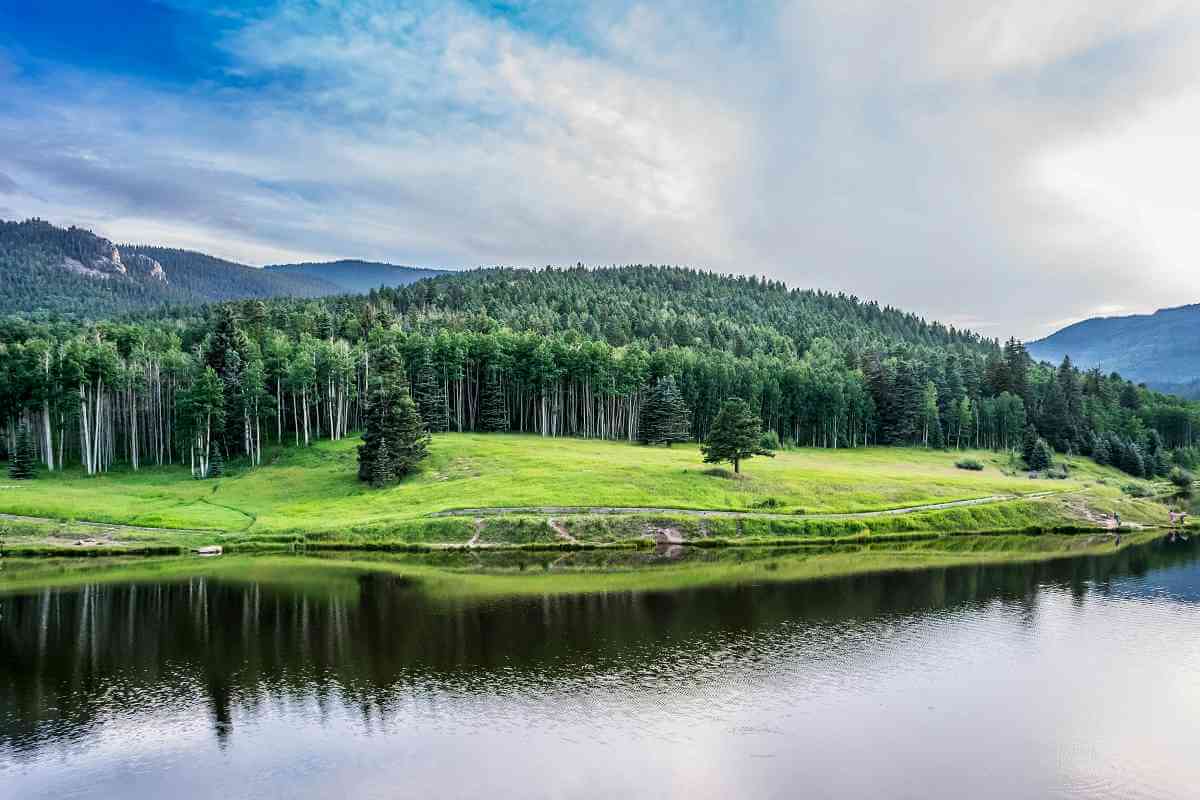Colorado's summer storms are captivating in their unpredictability, with beautiful sunny mornings, followed by sudden early afternoon thunderstorms. Nestled in the heart of the Rocky Mountains, these storms typically develop due to the state's high elevation, heating during the day, and the influx of moist air from the Gulf of Mexico.
As we see the storm build, with lightning tearing across the sky, in an incredible display of nature's electricity. Heavy rain follows, sometimes accompanied by hail, which can vary in size from tiny pellets to larger stones, depending on the storm's intensity. Flash floods can be of concern, particularly in the mountainous regions where runoff can quickly overwhelm small creeks and streams.
Despite their ferocity, Colorado's summer storms are often brief but intense, lasting anywhere from thirty minutes to a few hours. Once the storm passes, the air feels refreshed, and the landscape glistens under the returning sunlight. The scent of damp earth mingles with pine and wildflowers, showcasing the beauty of our state that we've all come to love!
For outdoor enthusiasts, these storms add an element of excitement and caution to activities like hiking, camping, and fishing. It's essential to be prepared by checking weather forecasts and carrying appropriate gear, including rain jackets and sturdy footwear.
However, when these storms are accompanied by hail, there can be serious damage inflicted. Here are some steps to help minimize that damage:
Garage Parking: Park vehicles in a garage whenever possible to shield them from hailstorms.
Car Covers: Use specially designed car covers or blankets during hail warnings to protect vehicles parked outside.
Sheltered Parking: Seek shelter under overhangs, carports, or other structures that can provide protection from hail.
Weather Alerts: Stay informed about weather forecasts and warnings to anticipate hailstorms and take preventive measures.
Tree Cover: Park under large, sturdy trees to minimize hail exposure, but be cautious of falling branches during storms.
Hail-resistant Roofing: Install hail-resistant materials on roofs, such as impact-resistant shingles or metal roofing.
Window Shields: Close blinds, curtains, or shades to protect windows from potential hail damage.
Outdoor Furniture: Secure or store outdoor furniture and equipment to prevent damage from hailstones.
Gutter Maintenance: Keep gutters and downspouts clear to prevent blockages that could worsen water damage caused by hail.
Insurance Coverage: Review insurance policies to ensure adequate coverage for potential hail damage to property and vehicles.
Implementing these measures can help minimize potential damage and protect your home from the impact of hailstorms effectively.
If you have any comments or questions, please reach out to Anastasia, at [email protected], or call the office at 720.335.6872!
